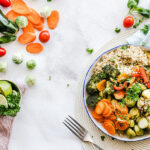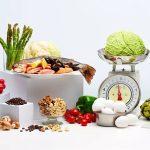The ketogenic diet, commonly referred to as “keto,” has become one of the most popular ways to lose weight, manage blood sugar, and boost overall health. This low-carb, high-fat diet shifts the body’s metabolism into a state of ketosis, where it burns fat for fuel instead of carbohydrates. To succeed on the keto diet, it’s essential to know which foods align with the principles of this eating Keto diet food list plan.
If you’re new to keto, one of the first steps is creating a comprehensive food list. This guide will break down the key foods to eat and avoid, making it easier to stick to the diet and reach your health goals.
Keto-Friendly Foods: What to Eat
When following a ketogenic diet, you want to consume foods that are high in healthy fats, moderate in protein, and very low in carbohydrates. Here’s a breakdown of the best foods to include in your keto meal plan:
1. Healthy Fats
The cornerstone of the keto diet is fat. Here are the best sources:
- Avocados – Rich in healthy monounsaturated fats, fiber, and very low in carbs, avocados are an essential keto food.
- Olive oil – A great source of monounsaturated fats that can be used in cooking or drizzling over salads.
- Coconut oil – Contains medium-chain triglycerides (MCTs), which can boost fat-burning and ketone production.
- Butter and ghee – Opt for grass-fed varieties for higher omega-3 content. Ghee is clarified butter, making it ideal for cooking at higher temperatures.
- MCT oil – This type of oil is specifically made to support ketosis and is often used in smoothies or coffee.
2. Proteins
Moderate protein consumption is key on keto. Too much protein can convert into glucose through a process called gluconeogenesis, potentially kicking you out of ketosis.
- Grass-fed meats – Beef, lamb, and pork are great sources of protein and fat.
- Poultry – Chicken, turkey, and duck are all keto-friendly options, especially when cooked with the skin.
- Fatty fish – Salmon, mackerel, sardines, and trout are high in omega-3 fatty acids, making them excellent choices for a keto diet.
- Eggs – One of the most versatile and affordable sources of protein. Eggs are low in carbs and high in healthy fats, making them a perfect fit for keto.

3. Low-Carb Vegetables
Most vegetables are packed with nutrients, but many are too high in carbs for keto. Stick to non-starchy vegetables, which are lower in carbs:
- Leafy greens – Spinach, kale, arugula, and lettuce are all excellent options.
- Cruciferous vegetables – Broccoli, cauliflower, and Brussels sprouts are nutrient-dense and low in carbs.
- Zucchini – A versatile vegetable, perfect for making zucchini noodles (zoodles) as a pasta substitute.
- Asparagus – Low in carbs and rich in vitamins and minerals.
- Mushrooms – Great for adding texture and flavor to keto dishes, and very low in carbs.
4. Dairy (Full-Fat)
Full-fat dairy is a staple on keto because it provides both fat and protein without excess carbs.
- Cheese – Hard cheeses like cheddar, gouda, and parmesan are lower in carbs than soft cheeses.
- Heavy cream – Ideal for coffee, smoothies, or keto desserts.
- Greek yogurt (unsweetened) – Look for full-fat, unsweetened versions for a protein-packed snack.
- Cream cheese – Great for adding richness to recipes or used as a base for keto dips.
5. Nuts and Seeds
Nuts and seeds provide healthy fats, protein, and fiber. Just be mindful of portions, as nuts can be calorie-dense.
- Almonds, walnuts, macadamia nuts, and pecans – These nuts are higher in fats and lower in carbs compared to others.
- Chia seeds – Loaded with fiber and omega-3s, chia seeds are perfect for keto-friendly chia pudding.
- Flaxseeds – High in fiber and great for baking keto bread or adding to smoothies.
6. Low-Carb Beverages
On keto, it’s important to stay hydrated and avoid sugary drinks.
- Water – Always your best option.
- Black coffee – A popular drink on keto, full of antioxidants and free of carbs.
- Herbal tea – Unsweetened tea (green, black, peppermint) is another great option.
- Bone broth – Not only hydrating but also rich in collagen and minerals.
7. Sweeteners (In Moderation)
While sugar is off-limits, there are keto-friendly sweeteners that won’t spike blood sugar:
- Stevia – A natural, zero-calorie sweetener that doesn’t raise blood sugar levels.
- Erythritol – A sugar alcohol with minimal carbs and no impact on blood sugar.
- Monk fruit – A zero-calorie sweetener that can replace sugar in many recipes.

Keto Foods to Avoid
To keep your body in ketosis, it’s essential to avoid foods that are high in carbohydrates. These include:
1. High-Carb Vegetables
Starchy vegetables, while nutritious, can interfere with ketosis due to their higher carb content:
- Potatoes – Even sweet potatoes are too high in carbs for a keto diet.
- Corn – High in starch and sugars, so it’s a no-go on keto.
- Peas and beans – These legumes contain too many carbs, though small portions of green beans or snap peas are acceptable.
2. Grains and Legumes
Grains are typically too high in carbs and should be avoided, including:
- Wheat – Bread, pasta, and baked goods made from wheat flour.
- Rice – Both white and brown rice are too carb-heavy for keto.
- Oats – While healthy in moderation on other diets, oats are high in carbs and not suitable for keto.
- Lentils – High in carbs and not keto-friendly, though small amounts of certain legumes can sometimes be included.
3. Sugar and Sugary Foods
Sugar is the enemy of the keto diet. Stay away from:
- Candies – Nearly all candy contains refined sugar and other high-carb ingredients.
- Baked goods – Cakes, cookies, muffins, and donuts are loaded with sugar and flour.
- Sugary drinks – Soda, juice, and sugary iced tea will sabotage your efforts.
4. Processed Foods
Many processed foods contain hidden sugars and unhealthy fats that can knock you out of ketosis:
- Fast food – Most fast food options are high in carbs, refined oils, and added sugars.
- Pre-packaged snacks – Granola bars, chips, and crackers are often packed with sugar or refined grains.
- Processed meats – Sausages, hot dogs, and deli meats can contain added sugars, starches, and preservatives.
Tips for Success on the Keto Diet
- Plan meals ahead: Preparing your meals in advance will help you avoid carb-rich temptations.
- Read labels: Always check food labels for hidden sugars and carbs, even in seemingly keto-friendly foods.
- Track your macros: Keeping track of your daily intake can help ensure you stay within the appropriate carb, fat, and protein ratios.
Conclusion
The keto diet isn’t just about cutting carbs—it’s about fueling your body with nutrient-dense, high-fat foods that support a state of ketosis. By focusing on healthy fats, quality protein sources, and low-carb vegetables, you’ll be well on your way to achieving your health and fitness goals. Stick to the keto-friendly foods on this list, avoid the high-carb culprits, and you’ll be set for success on your ketogenic journey!




